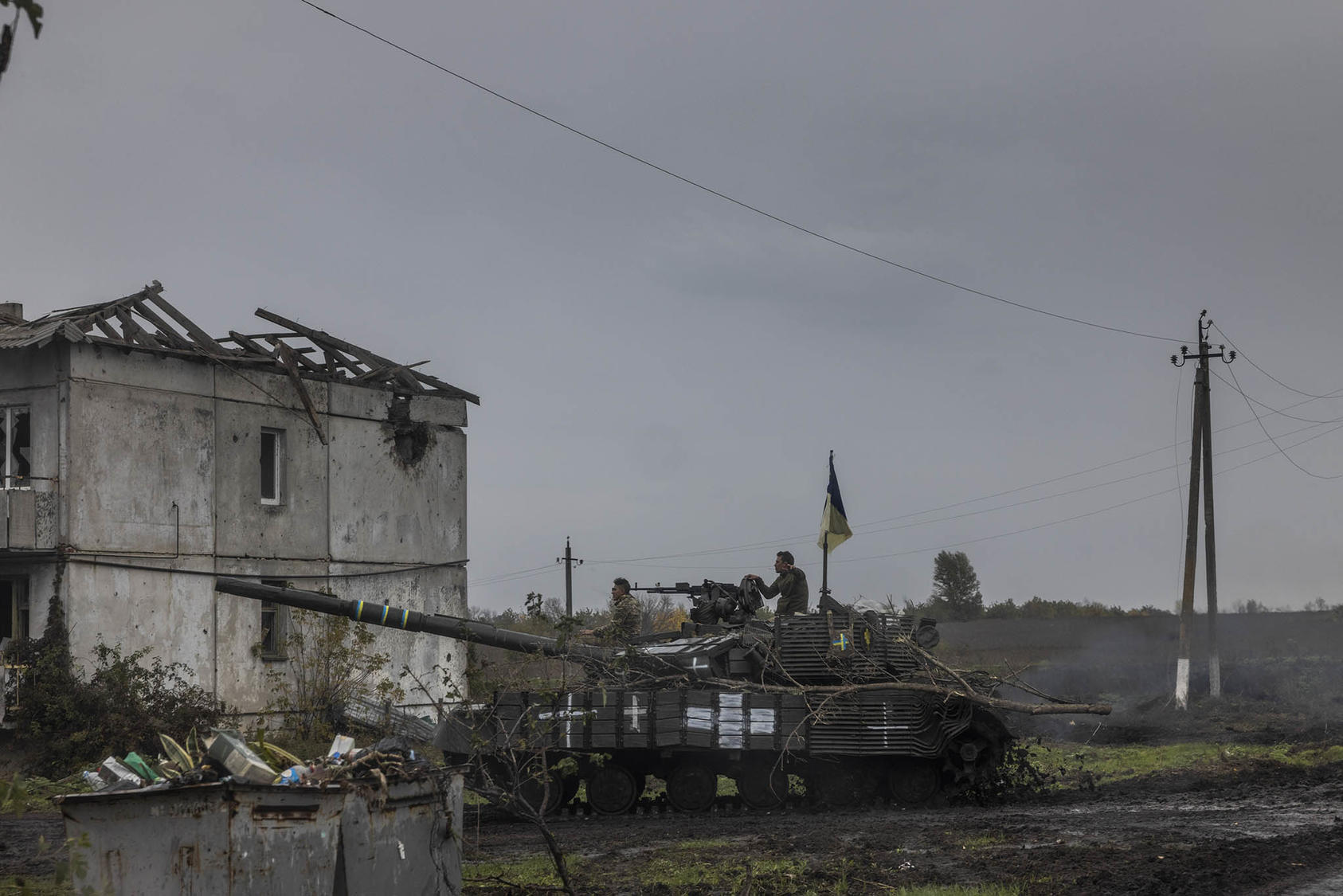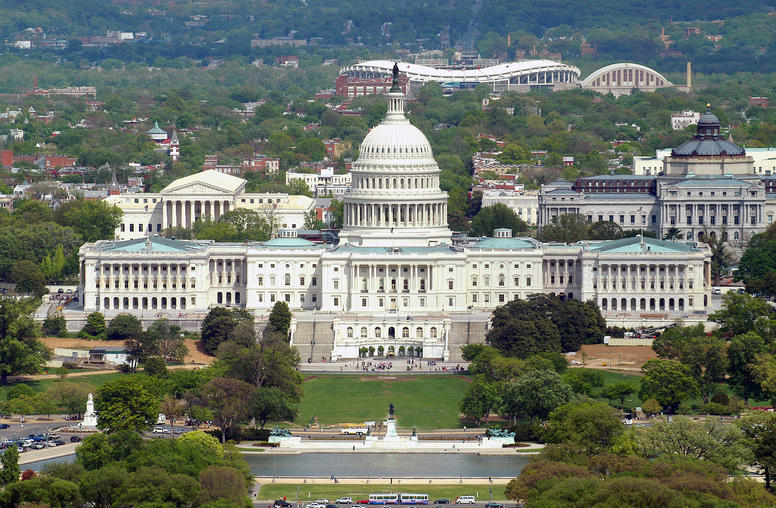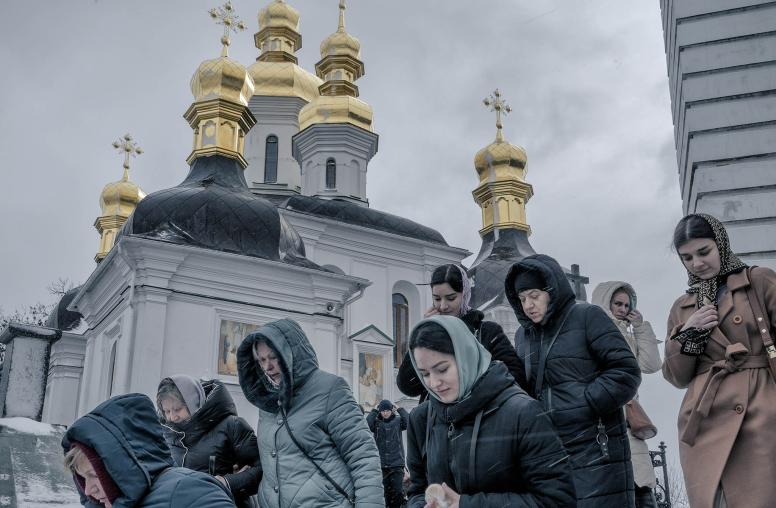Is Russia Escalating to De-Escalate?
As Russia suffers successive defeats, Putin may be seeking to precipitate a Cuban missile crisis moment to pave the way toward an exit from the war.
Vladimir Putin is under increased pressure as Russia continues to lose ground inside Ukraine. Faced with the prospect of stark losses — potentially leaving Russia in a worse position than before its February 24 invasion — Moscow may be embarked on an “escalate to de-escalate” strategy. By raising the specter of a nuclear confrontation twice in recent weeks, Putin may in fact be seeking a way out of his dilemma marked by Russia’s strategic failure in Ukraine. The coming weeks will be critical as Putin pursues nuclear brinksmanship — possibly even repositioning tactical nuclear weapons — while actually seeking an exit.

Military and Political Pressure
Ukraine’s recent counteroffensives mark yet another turning point in war. Even as Moscow illegally annexed areas of Ukraine, Russian forces have been in retreat in the face of a successful Ukrainian push to regain territory. Ukrainian forces recently recaptured the strategic city of Lyman in the Donestk region and continue to push further east. Russian corpses littered the road as Ukrainian forces moved in amid reports of Russian troops fleeing the front lines, dramatic signs of Russia’s continuing reversals.
Over the past few weeks, Kyiv has managed to score several key battlefield victories, starting in the southern Kherson region and followed by an even more successful counteroffensive in the north, in the Kharkiv region. Within days, Ukrainian forces recaptured much of the territory Russia had slowly gained over the preceding months, liberating over 3,000 square miles.
Russia’s battlefield defeat has had political repercussions. The so-called Russian “milbloggers,” whose blogs and social media commentary represent ultra-nationalist support for the Russian invasion, had long been critical of Russia’s military performance. Some of the most ardent channels have called for the firing of the military leadership, including Defense Minister Sergei Shoigu.
International pressure from some of his key allies is also increasing. On the margins of late September’s Shanghai Cooperation Organization (SCO) summit in Uzbekistan, Putin discussed with Chinese President Xi Jinping, Xi’s unspecified “concerns” with the war. Indian Prime Minister Narendra Modi was blunter with Putin, telling him he should “move onto the path of peace.”
In private discussions with one of us, Moscow-based Russian analysts have underscored how recent losses signal Russia’s need to change its tactics and escalate the war. They raised the prospect of mobilization (also noting the unpopularity of this move) and targeting of critical Ukrainian infrastructure — including water and electricity as part of a revised conflict strategy. The Russian military could also resort to using more heavy and sophisticated weaponry.
Putin’s Response
Putin appears to be following this playbook. Despite popular opposition, Putin ordered a partial military mobilization on September 21. While not the full mobilization and declaration of war the “milbloggers” desired, this was a clear concession to them. The number of men to be mobilized was not made public, but Defense Minister Shoigu said it was 300,000. Other reports have alleged it is actually one million. The mobilization has sparked a mass exodus of military-aged men from Russia, estimated at more than 180,000.
Russia may also have begun a campaign against critical infrastructure. NATO has deemed a series of suspicious Nord Stream pipeline leaks to be sabotage and threatened retaliation, while not directly blaming Russia. Meanwhile, in Ukraine, the Russian military targeted more civilian infrastructure, cutting off power to much of Kharkiv on September 11 and bombing a dam in Kryvyi Rih on September 15. Hawkish members of the Russian Duma are calling for the targeting of Ukraine’s critical infrastructure including electricity, water and transportation lines.
Russia also moved to speed up the annexation of occupied Ukrainian territory, holding sham referendums in four partially Russian-occupied regions of Ukraine. On September 30, Putin announced their annexation, preparing the ground for the most dangerous escalation — the threat to use nuclear weapons. Putin made this threat clear: “The United States is the only country in the world that has used nuclear weapons twice, destroying the cities of Hiroshima and Nagasaki in Japan. And they created a precedent.” This follows a September 21 speech, in which Putin argued, “In the event of a threat to the territorial integrity of our country and to defend Russia and our people, we will certainly make use of all weapon systems available to us. This is not a bluff.” Former Russian president and Putin ally Dmitry Medvedev echoed the threat in a September 27 Telegram post.
Escalating to De-escalate?
The war in Ukraine appears to be at a critical inflection point. Paradoxically, Putin’s colossal strategic errors are leading him toward increasingly aggressive behavior. He seems to be embarked on a dangerous path of escalation in Ukraine — and potentially beyond — while adopting perilous decisions at home. And he appears likely to continue along this alarming trajectory: further strikes on critical infrastructure including cyberattacks can be expected.
Most concerning, Putin has repeatedly threatened to play the nuclear escalation card. In the coming weeks, he could publicly telegraph the transfer of tactical nuclear weapons closer to Ukraine; far less likely, he could even opt to detonate a tactical nuke offshore as a “demonstration strike.” Washington’s private messaging to Moscow of the “catastrophic” consequences should Russia pursue a nuclear option underscores that such a move by Putin would be almost suicidal. And military strategists point to the significant downsides of deploying tactical nuclear weapons, with only limited gains.
But appearances may be misleading. Russia may be escalating out of weakness — escalating to de-escalate. In nuclear parlance, “escalate to de-escalate” refers to the tactical use of nuclear weapons for battlefield gains before de-escalating. In the current context, Putin may be seeking to wield the threat of the use of nuclear weapons — without their actual deployment on the battlefield — to compel his adversary to concede. Russia is losing ground in the conflict, but threatening use of its nuclear arsenal allows Moscow to appear that it is operating from a position of strength — a nuclear power on par with the United States.
Indeed, in the private discussion, one Russian analyst asserted that Russia wants to negotiate and is employing escalation tactics to get to the negotiation table. Raising the example of the Cuban missile crisis, the strategist noted that a direct threat of nuclear confrontation would be a clarifying move that would get the West’s attention and lead to a more pronounced effort at negotiation.
Putin is clearly more dangerous now than ever, but he remains a rational actor. Russia today is in a weakened position by virtue of the grave miscalculations underpinning its illegal invasion of Ukraine. While the dire consequences of Putin’s nuclear brinksmanship must be taken seriously, it is important to consider that Russia, instead of seeking total victory, may be seeking a way out of what is increasingly a strategic blunder of historic proportions. Putin’s continued saber rattling understandably got the most attention in his September 30 speech, but buried in the vitriol was a demand that Ukraine return to the negotiating table. The pageantry of the annexation aside, it is becoming increasingly difficult for the Kremlin to convince the Russian people that victory is near. The call for mobilization, even if partial, is a clear sign that all is not well on the battlefield. Similarly, on October 2, the popular newspaper Komsomolskaya Pravda published an unusually frank report on the Russian retreat from Lyman. As this bad news accumulates, de-escalation appears more and more like the best, if not the only, path forward for Russia.



